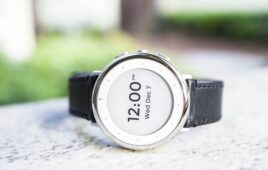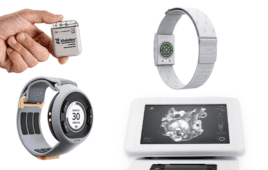Algorithmic solution for hearing aids and implants tunes out talkers, tunes in the person the wearer wants to hear
Wearers of cochlear implants and hearing aids often have difficulty teasing out what someone is saying over “babble” — the cacophony of other talkers — and other ambient sounds. New York University researchers have devised a novel solution: an algorithmic approach that, like making drinkable water from pond water, distills the talker’s voice from a turbid wash of noise.
Most algorithms for acoustic noise suppression aim to eliminate steady background noise — the sound of an air conditioner or road noise are familiar examples — which is relatively easy to attenuate. Babble is much more difficult to suppress because it resembles the foreground voice signal one aims to hear. Few algorithms even attempt to eliminate it.

A simplified flowchart demonstrates NYU Tandon graduate student Roozbeh Soleymani’s algorithmic solution for reducing babble signals to hearing aids.
To tackle the problem, Roozbeh Soleymani, an electrical engineering doctoral student, created an innovative noise reduction technology called SEDA (for Speech Enhancement using Decomposition Approach) with Professors Ivan Selesnick and David Landsberger in the NYU Tandon Department of Electrical and Computer Engineering and the NYU Langone Department of Otolaryngology, respectively.
The traditional method to analyze a speech signal decomposes the signal into distinct frequency bands, like a prism that separates sunlight into a rainbow of colors. SEDA, however, decomposes a speech signal into waveforms that differ not just in frequency (the number of oscillations per second) but also in how many oscillations each wave contains.
“Some waveforms in the SEDA process comprise many oscillations while other comprise just one,” said Selesnick, whose National Science Foundation-funded research in 2010 was the springboard for Soleymani’s work. “Waveforms with few oscillations are less sensitive to babble, and SEDA is based on this underlying principle,” said Soleymani. Selesnick added that this powerful signal analysis method is practical only now because of the computational power available in electronic devices today.
J. Thomas Roland, Jr., the Mendik Foundation Professor and chairman of the Department of Otolaryngology-Head and Neck Surgery at NYU Langone, said noise is the number-one problem for people with any degree of hearing loss, even with an appropriately fit hearing aid or cochlear implant. “It is also a big problem even for normal-hearing people,” he said.
The potential uses for SEDA, for which a U.S. patent application has been submitted, go way beyond helping the hearing impaired. “While it was originally conceived for improving performance with cochlear implants (which it does very well), I can imagine the market might even be bigger in a mobile phone arena,” said Landsberger.
Outside funding support was provided by the National Institutes of Health’s National Institute on Deafness and Other Communication Disorders.




